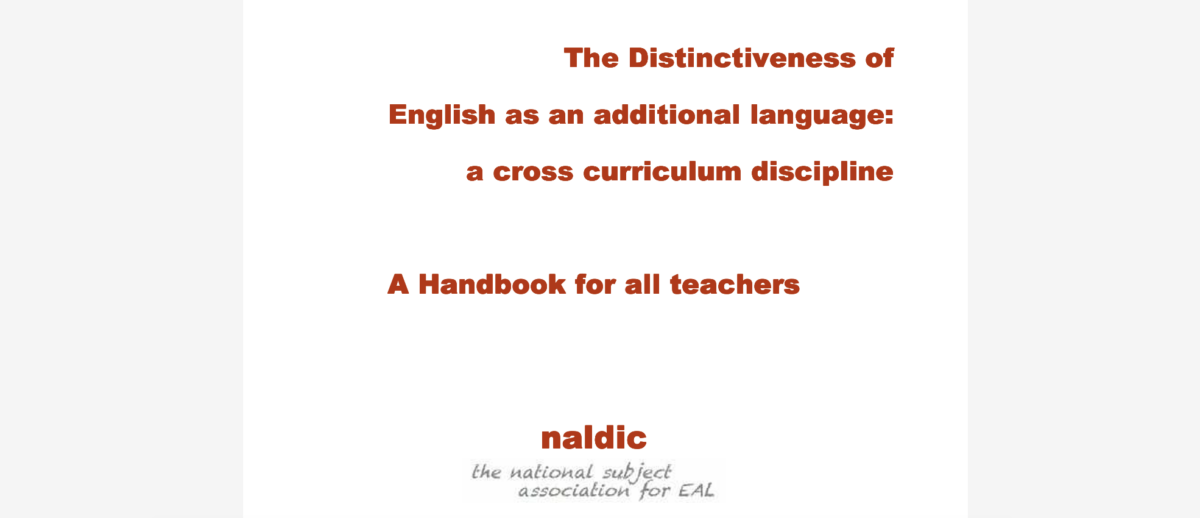Description
NALDIC’s bestselling Working Paper!
This is a handbook for all teachers which brings into focus what is distinctive about English as an additional language as a field of education. By bringing together theory and practice, it offers sound principles teaching and a basis for developing an understanding of the field.
It provides different perspectives on English as an Additional Language as a field of education and reflects the active relationship between research, theory and practice. It defines the distinctive features of teaching and learning with EAL, the knowledge base which informs EAL, the learners and the tasks they face, and EAL pedagogy including five principles which underpin good practice, which are:
- Activating prior knowledge
- The provision of a rich contextual background to make input comprehensible
- Actively encouraging comprehensible output
- Drawing the learner’s attention to the relationship between form and function; making key grammatical elements explicit
- Developing learner independence
Sections of the handbook cover a number of themes:
- The learner of EAL and the field of EAL: a conceptual model. The learner is considered in relation to language development, cognitive development and socio-cultural development, and how all of these aspects interact within the field of the learning context.
- The knowledge base for EAL draws on all of the following fields of study: Bilingualism, Second Language Acquisition (SLA), Linguistics, Cognitive Psychology, Social and Cultural Ethnography, Curriculum Studies, Theories of Teaching and Learning, and Language Assessment and Testing.
- The pupils learning EAL sets out the variables that have an impact on the development of pupils’ language skills and their ability to apply these skills to learning across the curriculum. Pupils learning EAL are not a homogeneous group, but have distinct and different needs. They are learning in and through another language and come from cultural backgrounds and communities with different understandings and expectations of education, language and learning.
- The distinctiveness of the learner’s task is to progress from a radically different starting point from other pupils, to learn a new language, to learn the curriculum in that new language, to acquire appropriate social skills, and to accommodate a new language, values, culture and expectations alongside existing ones learned at home.
- The distinctiveness of EAL pedagogy is a set of systematic teaching approaches which have evolved from classroom based practices in conjunction with the development of knowledge through theoretical and research perspectives. EAL pedagogy is about using strategies to support language development and learning in different classrooms and pupil contexts.
- Theoretical perspectives which inform practice answers a series of frequently asked questions and provides examples of perspectives which have been influential in the field including those of Jim Cummins and Virginia Collier.




Reviews
There are no reviews yet.